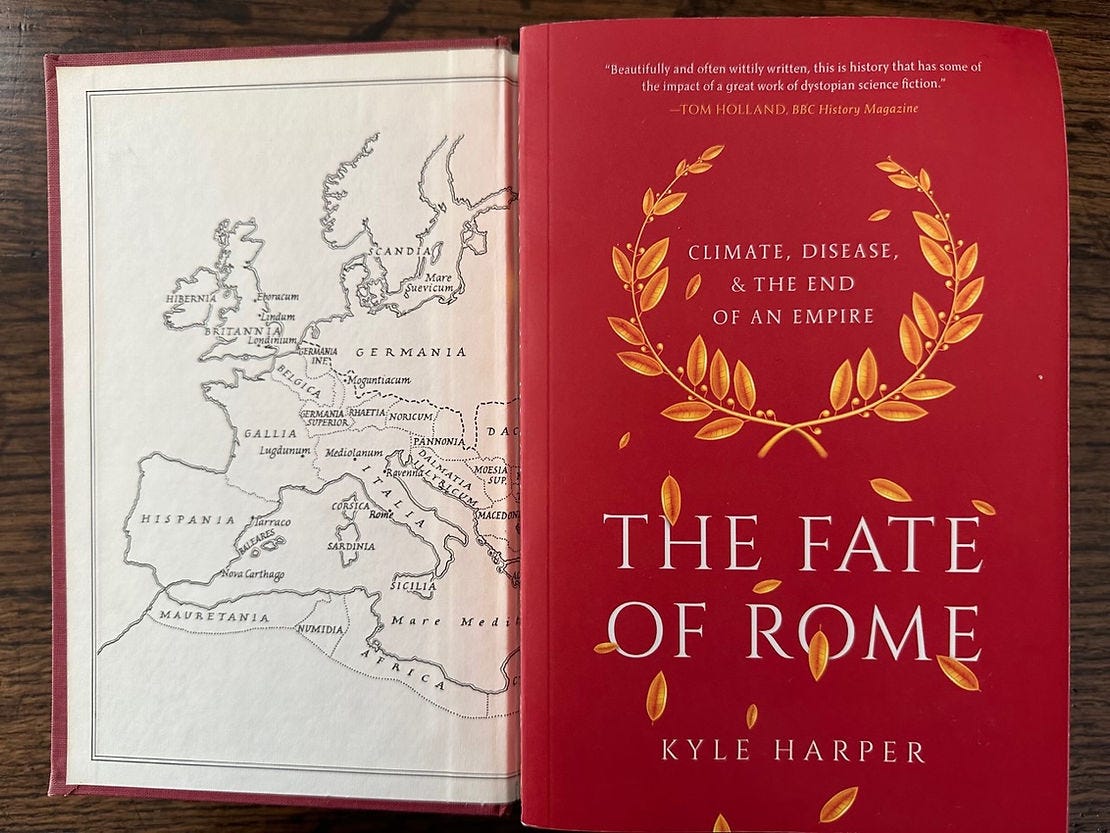Review of THE FATE OF ROME: Climate, Disease & the End of an Empire
Not the "decline & fall" ... much shorter (and better)
The “decline and fall of Rome” is so much more than Edward Gibbons’ massive masterpiece. It has served as a warning for all empires, particularly “Western” ones. The Founding Fathers were obsessed with both the reasons for Rome’s imperial success and its gradual decline seeing their fledgling nation as the embryonic start of a similarly vast empire. When America feels like it is going to rot, which for most of us throughout our “boomer” years, has been pretty much the state of things, too often pundits and politicians and armchair historians refer to the “decline and fall of Rome.” This book goes a long way to rewriting this trope. It certainly beats reading Gibbons.
Though the central thesis is that Rome fell mostly because of the foundational attrition of disease and climate change (a thesis Harper argues brilliantly), the sneaky big point lies elsewhere. Reading this book is not only a sweeping and very colorful account of the last 750 years of Rome but it brings with it the whole course of her history from its Etruscan beginnings to its last stand in Constantinople. This monumental story is told through the lens of disease and climate catastrophe and this scientific narrative conjures a history of Rome that is not “one fucking thing after another” – thank you “History Boys”. The writing can be a bit too detailed (skim) at times, but Harper is a very gifted and colorful writer with a true ear for the anecdote and the perfectly placed quotation. It is miraculously short.
While there are many sneaky big points, the one I suggested earlier was what Harper calls the “resilience paradigm”. Rome’s fall was catastrophic for Europe. She spent 1000 years recovering. The city itself went from 1 million inhabitants to less than 50,000 in just over 200 years. Europe forgot how to read. It forgot how to make concrete. This “lights out” legacy has disguised the fact that no continuous empire in human history (ancient Egypt as a possible exception) lasted so long and stitched together so many different peoples for hundreds of years. Harper notes that the empire survived consistent blows both external and internal, including the first pandemics in human history, but rose off the mat until it had exhausted its extraordinary resources. It was not a steady decline; rather, it was a steady set of recoveries until the combination of the Huns (driven by disease) invading the West and plague (killing up to 40% of the population) in the East destroyed her. It is an instructive point of view for the “chicken little” drumbeat we live with in America. Just like her subjects, an empire lives, like Rome, in a constant state of adversity. It is not how big and powerful you are at any given moment; rather, it is how you recover from the inevitable adversities generated internally and presented externally.
This is an important and clearly timely book. Another surprise will be, however, that the timeliness extends well beyond Covid 19 and climate change.
The Fate of Rome: Climate, Disease & the End of an Empire
Kyle Harper
2017 293 pages (net of fascinating notes)


